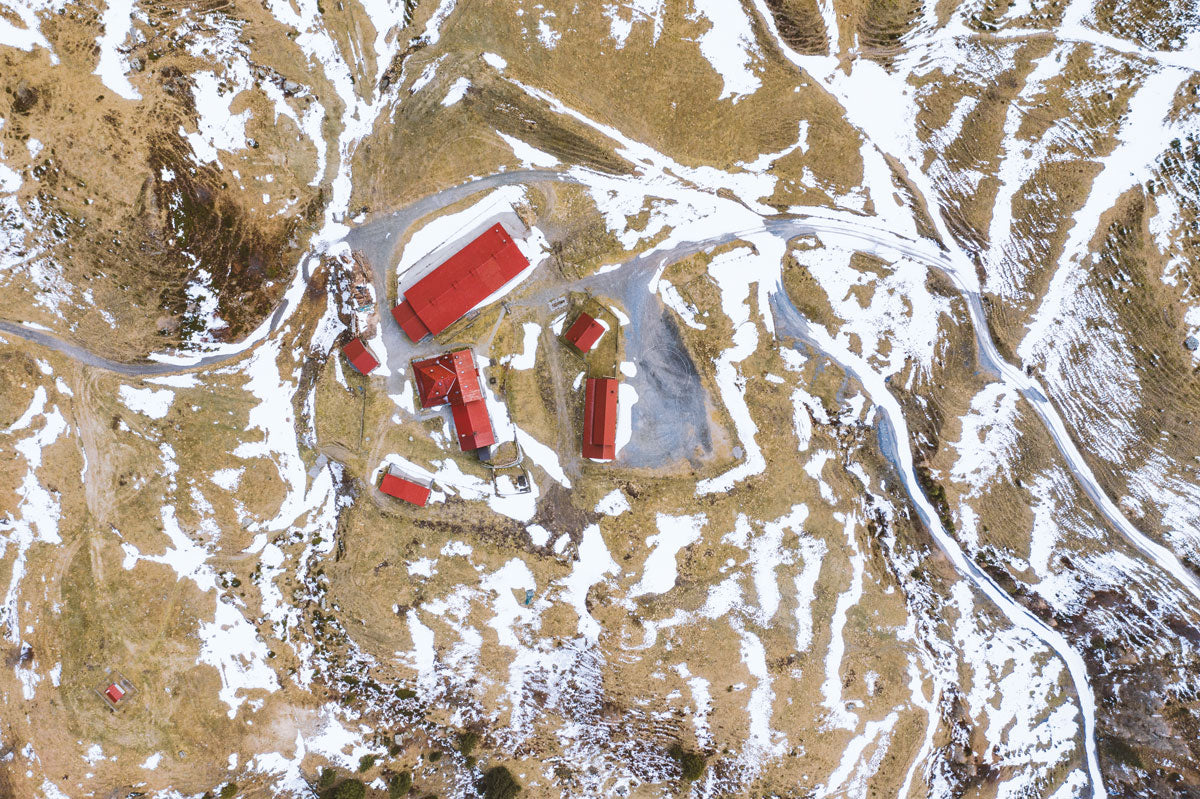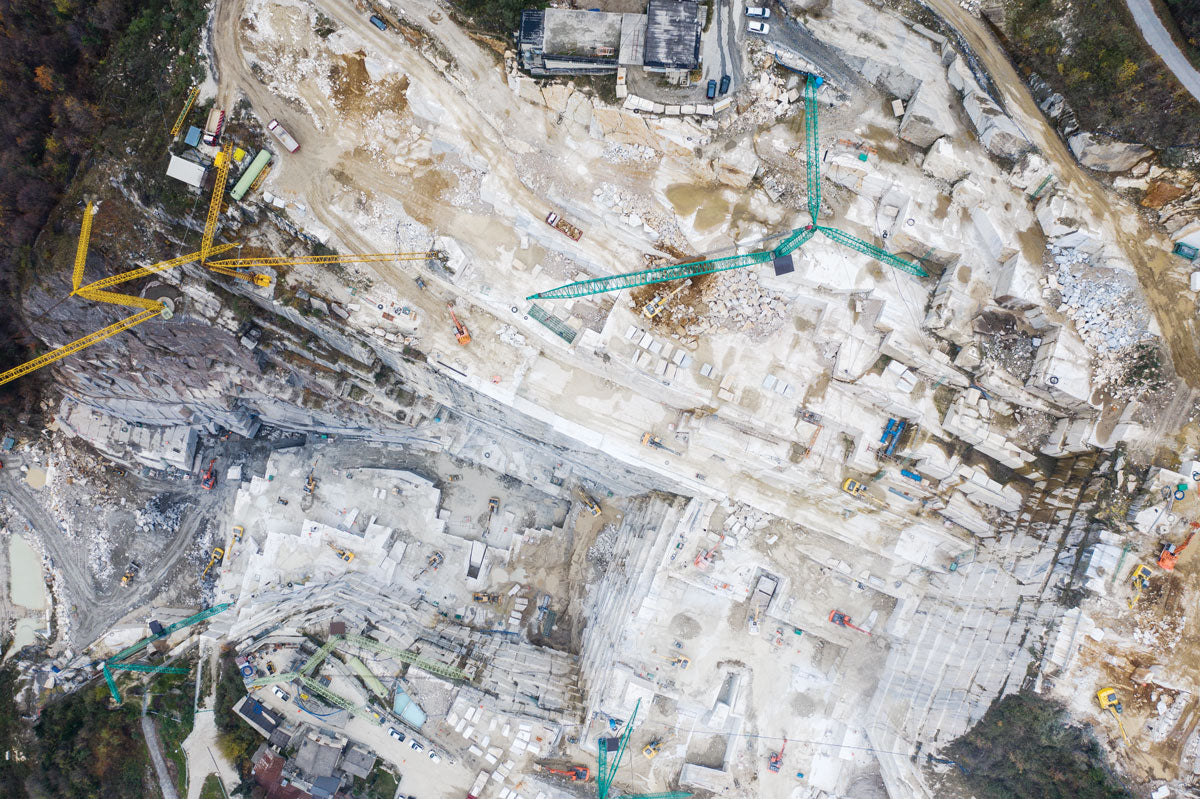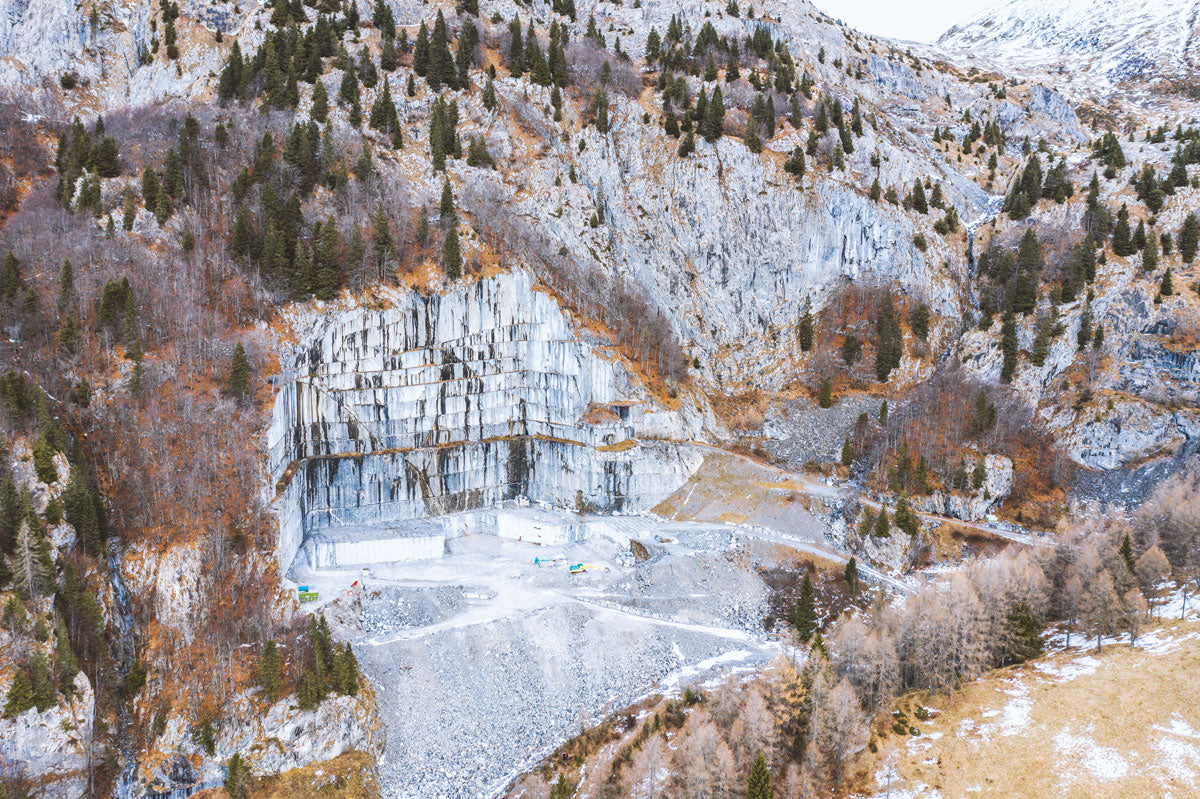A mountain foot village in the Domodossola community, in the Italian Piamonte region, is the last element of civilization before giving way to its majestic quarry. Quarry, which like many others and through their outcome, have led to the rise of monumental (and more landed) buildings. A couple of examples to begin with: the Pavia Cathedral and the Peace Arch in Milan.
The clouds and temperature begin to drop, visibility is reduced and it is at this point that it looks like Italy has been left behind. During the time of our visit, a next to zero activity greets us upon arrival, without even anticipating us with what we would see when we went deep into its core. Again, everything comes to life, but in a special way: the deposit goes inside, not upwards. Unlike traditional marble quarries far and wide across Italy, Palissandro is flanked by enormous metallic structures that carry rock blocks from its core and out hundreds of meters to the surface. Fantasy emerges while one feels so insignificant.

Palissandro is located on the country’s northern periphery where snow (during the European wintertime) begins to pile and from where Switzerland can be spotted, almost at plain sight. The mysticism, its essence and charm blend with the industrialization of the area and the picturesque side of a village that is hidden behind mountains.
The cold yields to the warmth of the quarry. Each one of us focused on their tasks smile and even pose and act before the cameras to offer our best moves to the lens.


After leaving behind several hundred kilometers from the center of Italy, the next marble stop resulted in a big surprise, even though Grigio Carnico is not precisely the easiest place to find on Earth. The Paluzza municipality, in Udine, hides another treasure, but this time far away from highways and streets marked on the GPS. Coverage, what is that? Without it and on our European sedan, perhaps not the best vehicle to travel across the mountain, we drove with little or no peace at all, to the top. After what felt like an eternity later, we reached a valley from which we could see the quarry. In addition to seeming far away, it looked deserted and with the inexistent phone signal, our doubts about being in the right place only increased. Armed with a drone, we inspected the area; there was no other way thanks to the blockage we were facing, caused by the snow. Just a few seconds later our worries dissipated: a mountain range (behind which Austria can be seen) with snowed tops and a city embedded among several mountains, turned the “recognition” flight into a true mine for our photographic eye. The images built up inside our memories, we lost track of time and even the reason that took us there.

Back in the civilization and after a much-needed hot tea, we went up again (now in a car made for that purpose), until a point where the snow did not let us go through. A half-hour hike on the woods and the snow made us reach Grigio Carnico, a closed quarry, to our surprise, due to the winter season. Far from being an impediment or deception, it turned out to be a unique and different experience to all the previous ones, since we were three individuals before immensity, the whole trip came into perspective.
Echoes of our voices, deep silence when recording, gigantic rock walls around us. How can such an industrial place feel so natural at the same time? (Only reflections on a bunch of memories…).

Once there, isolated from the bustle of life, we could experience the quality of the marble first hand, with just a small rock. Yes, with a small stone and by hitting it softly you can assess the kind of rock you are dealing with. Through noises that create harmony or, on the contrary, discordance. If a block does not sound harmonically, it is broken somewhere and thus, lacking quality.
Walking across these mountains, experiencing them, being able to come closer and take them closer to us through a few images, unleashes a feeling of sublime beauty; an almost mandatory journey if you want to understand and go back to the origin. A journey, more mental than physical, to find an interior look.


